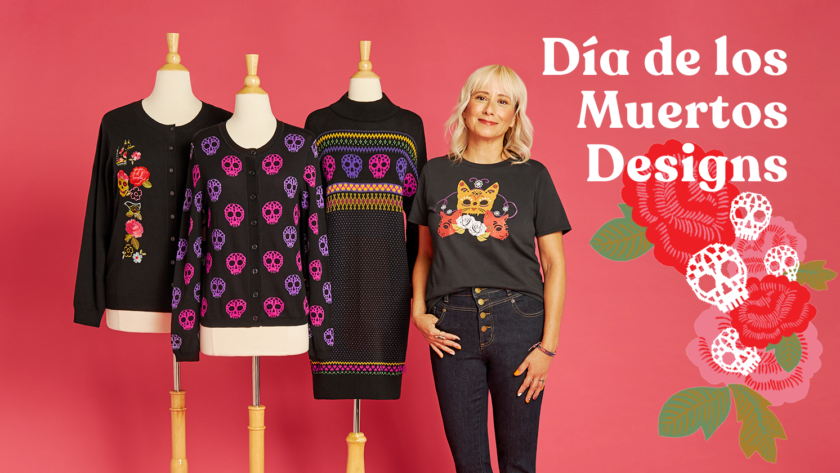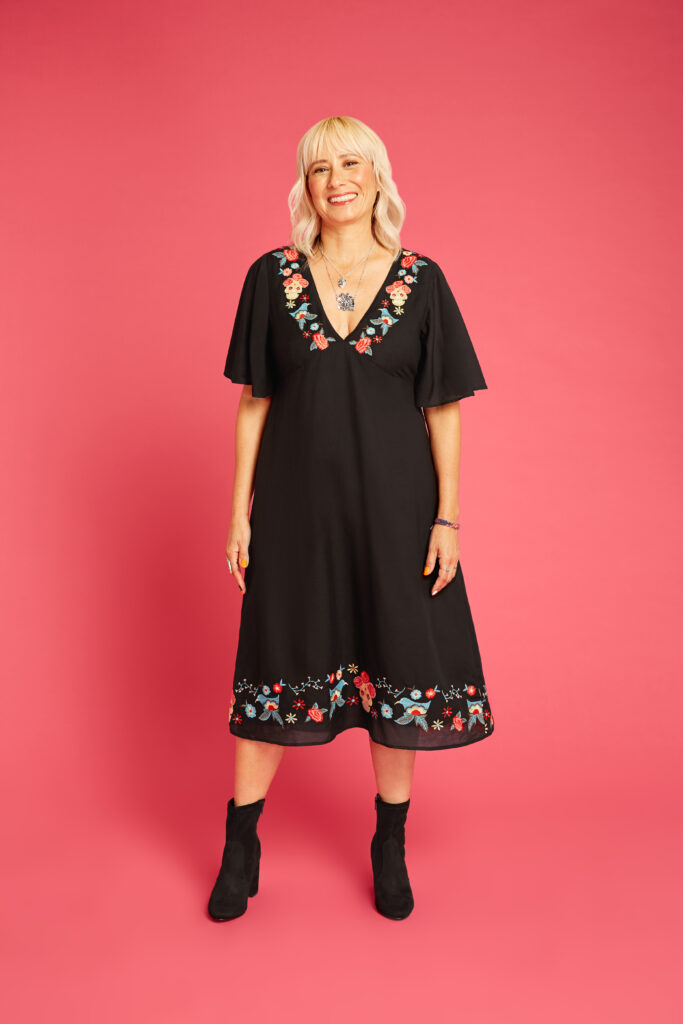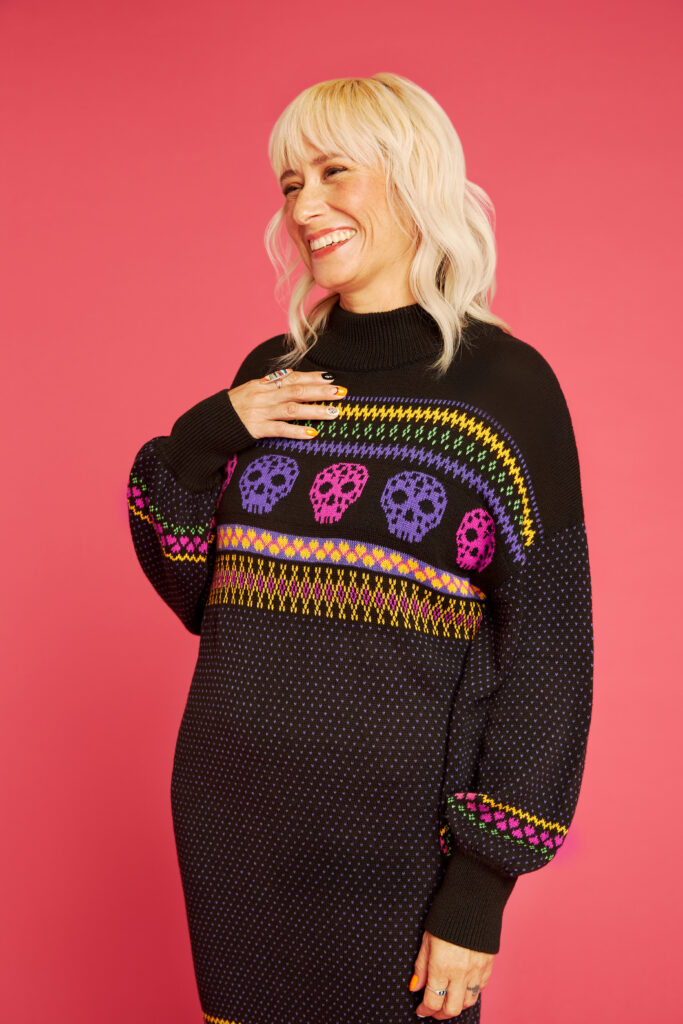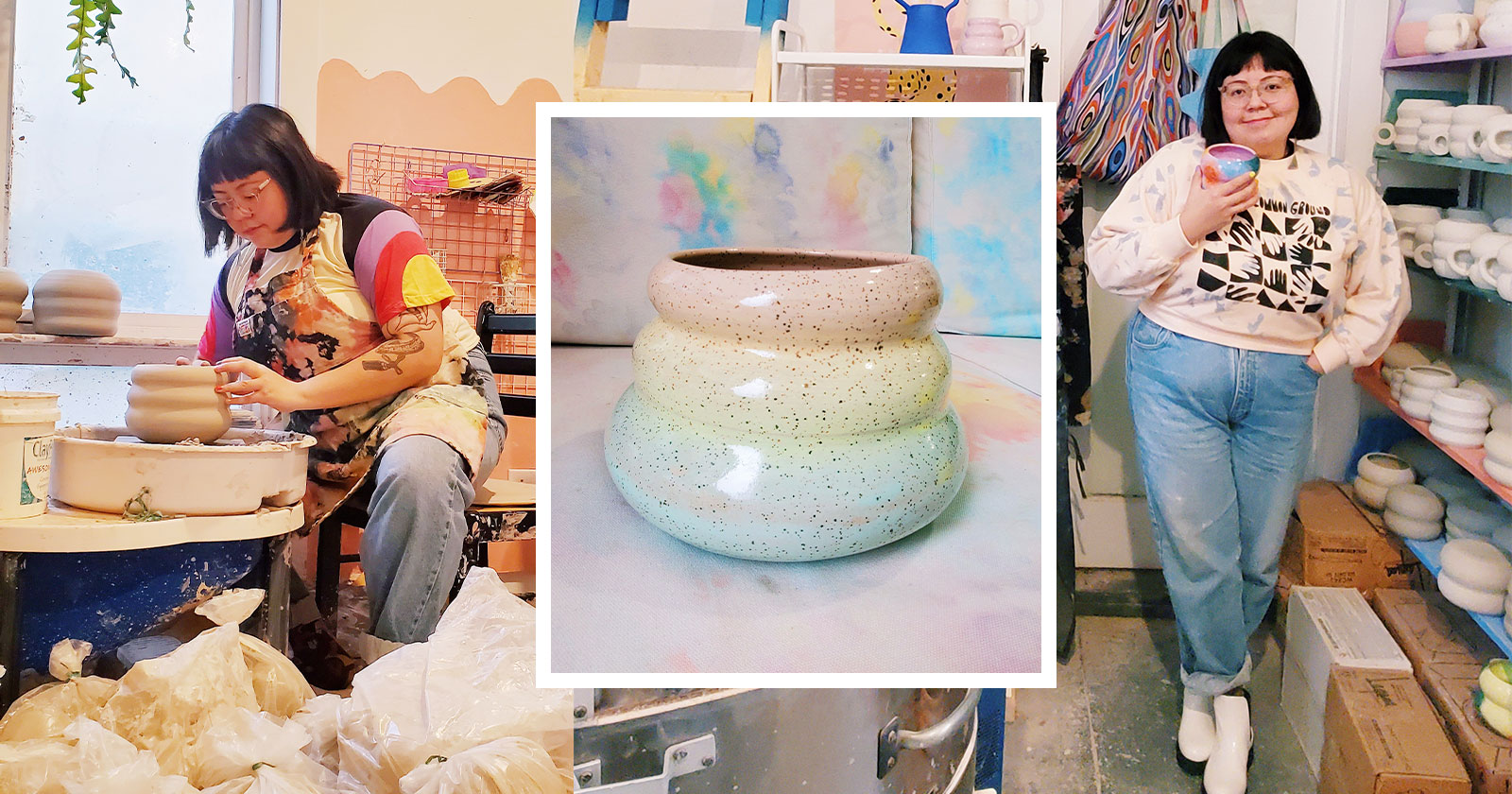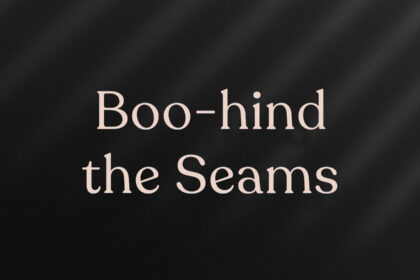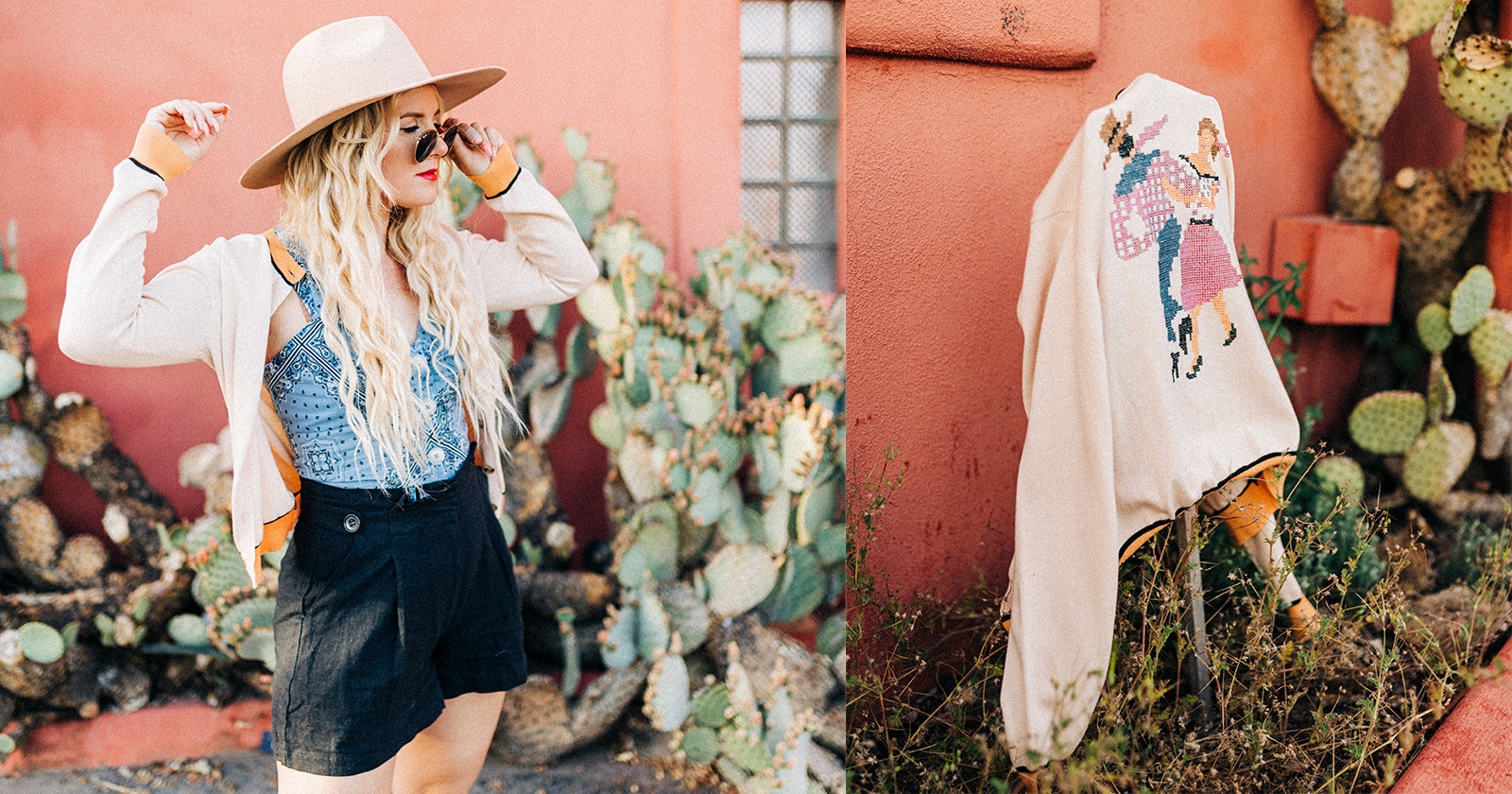For designer Rozi, family and storytelling is the guiding light to her latest collection, paying homage to the Mexican holiday, Día de los Muertos. Rozi’s designs celebrate Mexican traditions through swatches of vibrant color atop embroidered skulls, flowers, animals, and birds. Join us as we chat with Rozi about how this collection reflects her community, welcoming sentimentality to each piece.
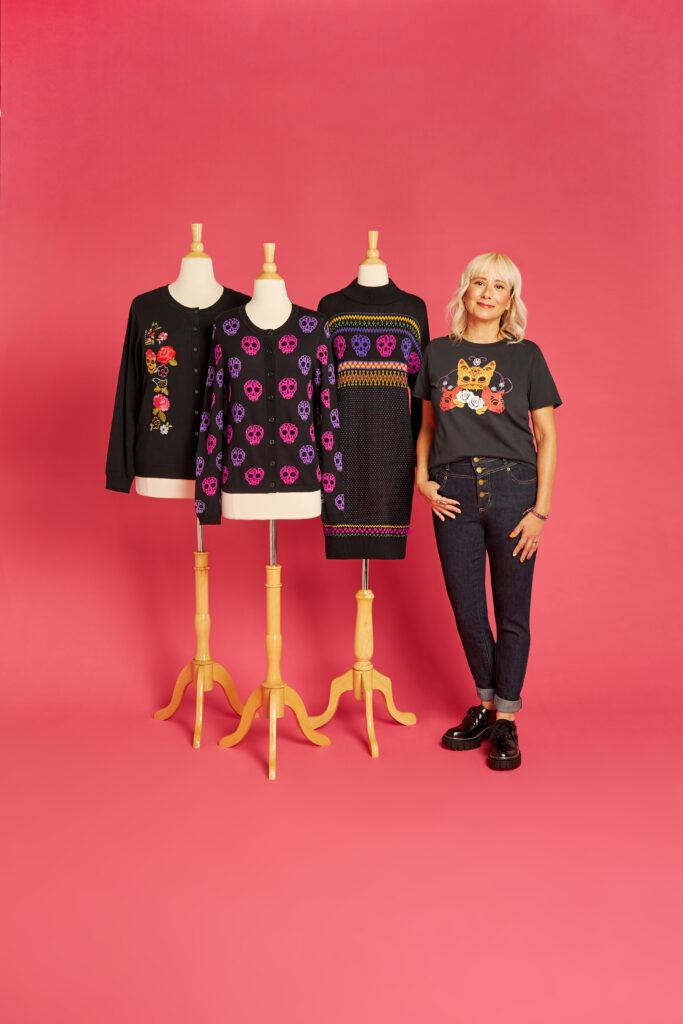
What is Day of the Dead and how do we honor the holiday?
Day of the Dead is a two-day holiday that honors our departed loved ones by celebrating death as a natural part of the human experience. It originated as a Latin American celebration combining traditional indigenous rituals with the Catholic celebrations of All Saints Day and All Souls Day. It is celebrated throughout Latin America and in some parts of Europe, though it is most closely associated with Mexico. My family and I build an altar called an “ofrenda” and fill it with photos of our loved ones, their favorite snacks and drinks and colorful sugar skulls. Other families visit the gravesites of their loved ones for a boisterous picnic with storytelling and music.
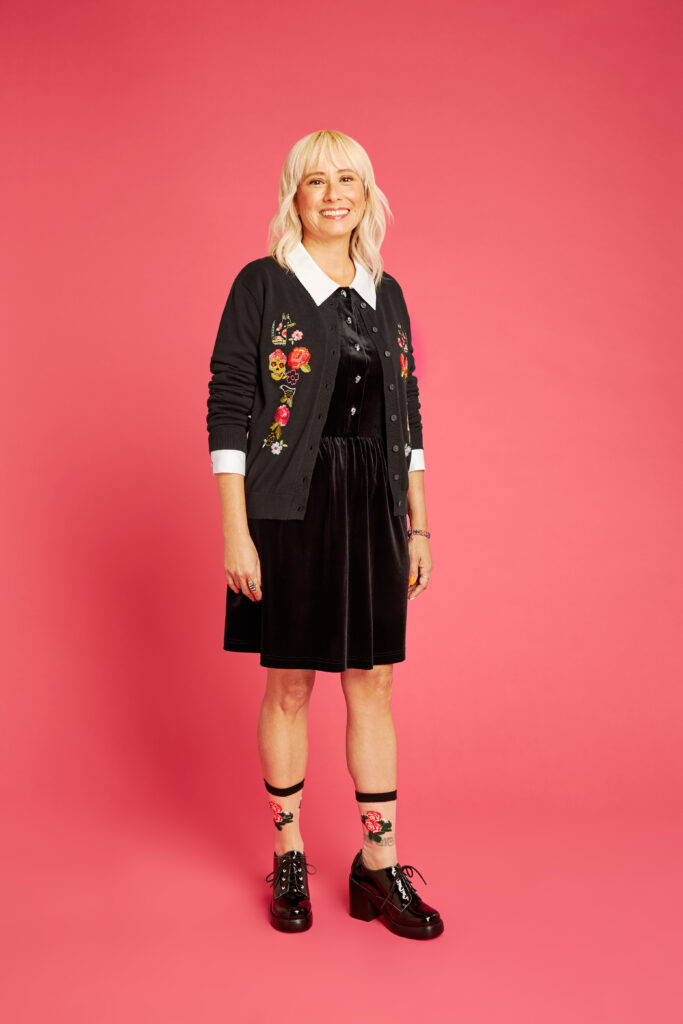
How does this collection reflect the traditions of the Day of the Dead?
This collection incorporates imagery that we use in our fiestas, like skull shaped “papel picado” which represents the wind and fragility of life. Skulls or “calaveras” are a way of inviting the dead into the realm of the living. We also decorate sugar skulls and make paper flowers. These are represented in our embroideries along with colorful “alebrijes”, our mystical animal spirits. The vibrant colors have meanings as well. Purple represents grief and mourning, while bright pink is the color of happiness!
What does this collection mean to your sense of community?
It’s important to note that Day of the Dead is not associated with Halloween, which is a Northern European Tradition. Although face-painting is encouraged as long as it is respectful of the dead ones it represents. I hope this collection invites our readers to explore more about Latin American culture and find that they can relate in some way and embrace our colorful traditions. And for our Latinx community, I hope we’ve represented our heritage in a way that can bring all of our diverse backgrounds together.
Are any of these pieces attached to a happy memory?
The papel picado sweater dress reminds me of walks around the plaza in my mom’s pueblo in Mexico, which would be decorated with the paper banners all around.
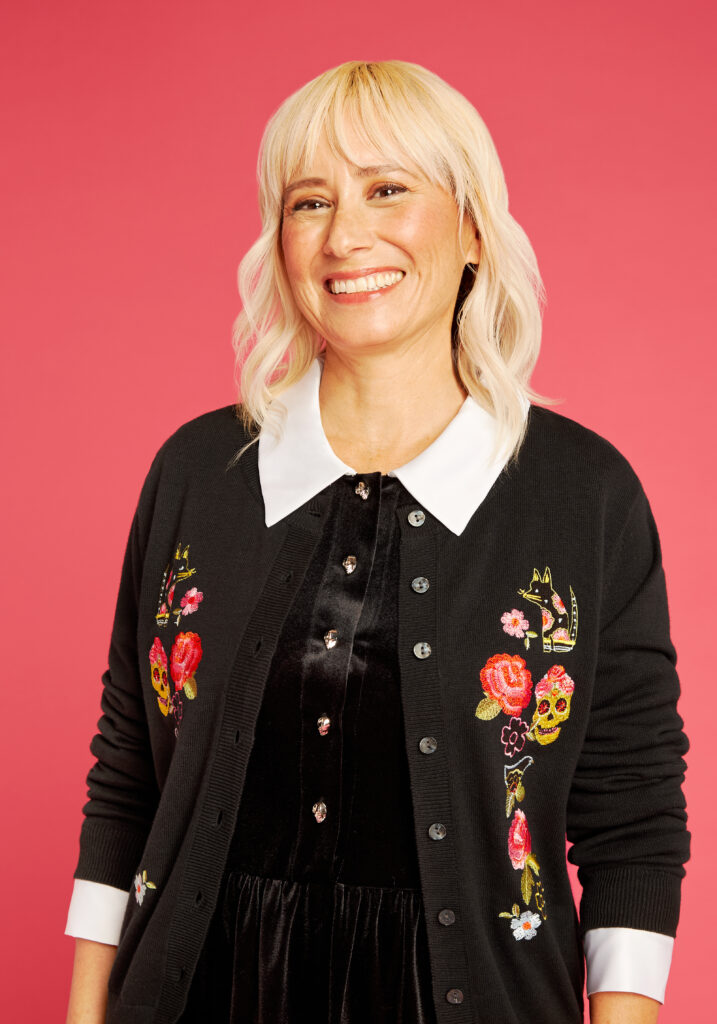
By ModCloth
What piece is nearest to your heart?
My dad was a prolific gardener. He passed away a few years ago. The embroidered cardigan has big red roses on it that remind me of his colorful garden.

